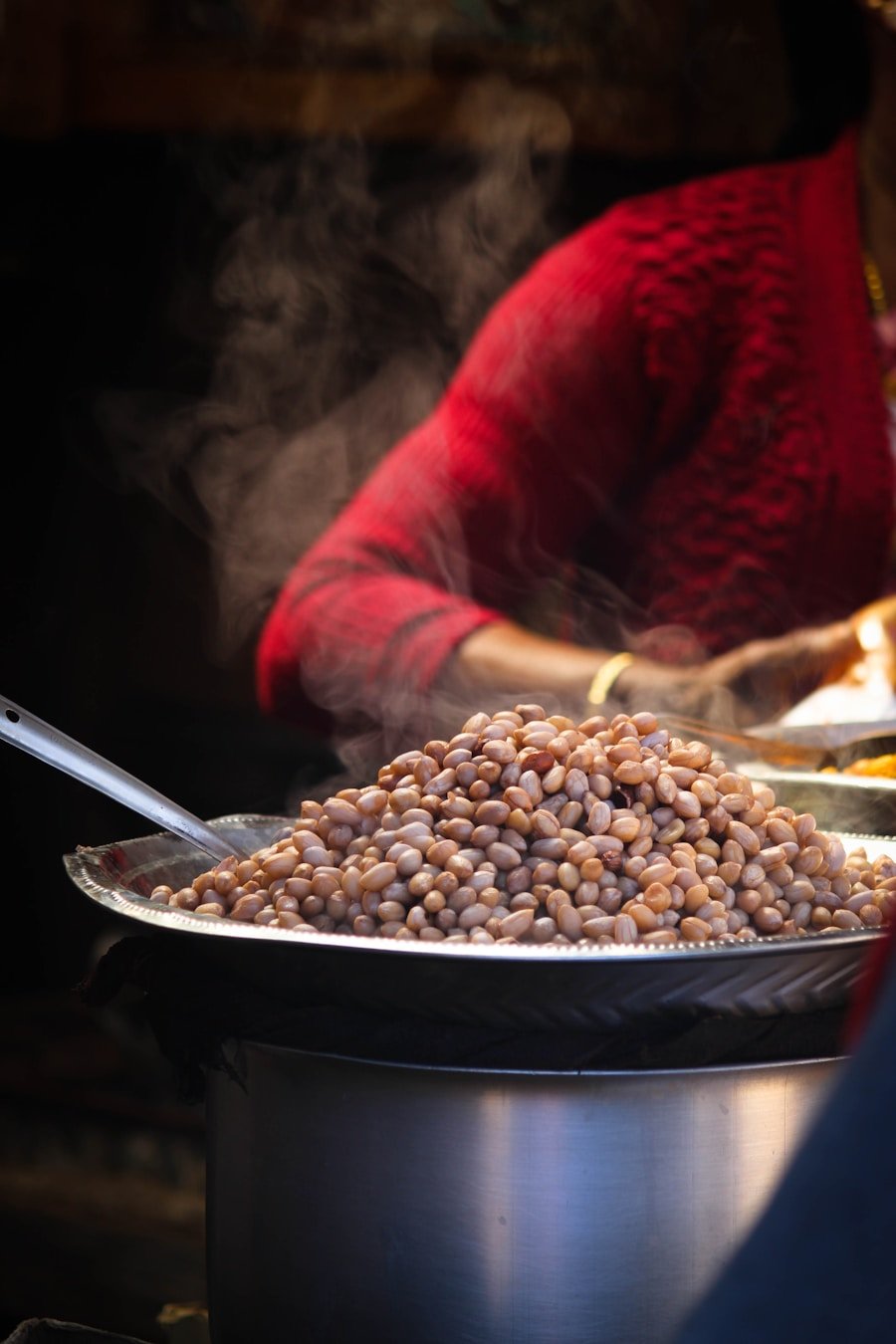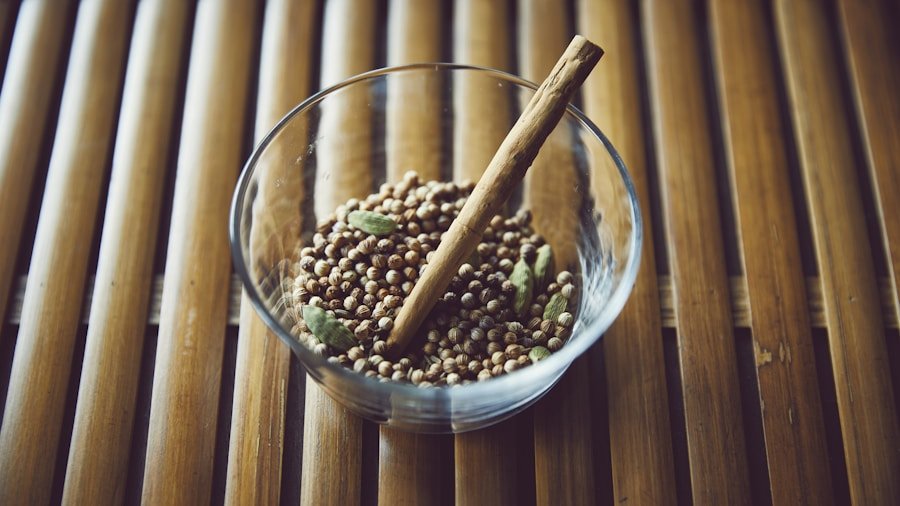Lentils are a staple in many cuisines around the world, celebrated not only for their nutritional value but also for their versatility in cooking. They belong to the legume family and are known for their high protein content, fiber, and essential vitamins and minerals. There are several types of lentils, each with unique characteristics that make them suitable for different culinary applications.
The most common varieties include brown, green, red, yellow, and black lentils, each offering distinct flavors and textures. Brown lentils are perhaps the most widely used variety. They have a mild, earthy flavor and hold their shape well when cooked, making them ideal for soups, stews, and salads.
Green lentils, often referred to as French lentils or Puy lentils, are slightly firmer and have a peppery taste. They are excellent for dishes where a bit of texture is desired, such as grain bowls or as a side dish. Red and yellow lentils, on the other hand, are split lentils that cook quickly and tend to become mushy.
They are perfect for creamy soups and dals, where a smooth consistency is preferred. Black lentils, also known as beluga lentils due to their resemblance to caviar, are small and shiny with a rich flavor. They hold their shape well and add a striking visual element to any dish.
Key Takeaways
- Lentils come in various types and varieties, including brown, green, red, and black, each with its own unique flavor and texture.
- Before cooking lentils, it’s important to sort and rinse them to remove any debris or impurities.
- When cooking lentils, boiling can result in a softer texture, while simmering can help maintain a firmer texture.
- Lentils can be seasoned with a variety of flavors and aromatics, such as garlic, onions, and spices, to enhance their taste.
- Achieving the ideal firmness when cooking lentils is key to their overall texture and can be achieved by monitoring cooking time and liquid levels.
Preparing Lentils: Sorting and Rinsing
Before cooking lentils, it is essential to prepare them properly to ensure the best flavor and texture. The first step in this process is sorting through the lentils to remove any debris or damaged grains. This is particularly important because lentils can sometimes contain small stones or other foreign materials that could affect the final dish.
A quick visual inspection is usually sufficient; however, it is advisable to spread the lentils out on a clean surface or a plate to make this task easier. Once sorted, rinsing the lentils under cold running water is crucial. This step helps to remove any dust or impurities that may have accumulated during packaging or storage.
Rinsing also helps to enhance the flavor of the lentils by washing away any residual starches that could lead to a gummy texture when cooked. To rinse lentils effectively, place them in a fine-mesh strainer and run cold water over them while gently stirring with your hand. This ensures that all grains are thoroughly cleaned before cooking.
When it comes to cooking lentils, there are two primary methods: boiling and simmering. Boiling involves cooking the lentils in rapidly bubbling water, which can be effective for certain types of lentils but may lead to uneven cooking if not monitored closely. For instance, brown and green lentils can be boiled initially to soften them quickly before reducing the heat to allow for a gentler simmer.
This method helps maintain their shape while ensuring they are cooked through. Simmering, on the other hand, is often the preferred method for cooking lentils as it allows for more controlled heat and moisture levels. By bringing the water to a gentle boil and then reducing it to a simmer, you can achieve tender lentils without the risk of overcooking or breaking apart.
This method is particularly beneficial for red and yellow lentils, which can become mushy if boiled too vigorously. The key is to monitor the cooking time closely; while brown and green lentils typically take about 20-30 minutes to cook, red and yellow varieties may only require 10-15 minutes.
Seasoning Lentils: Adding Flavors and Aromatics

Seasoning lentils is an art that can elevate their natural flavors and transform them into a delicious dish. The timing of when to add seasonings is crucial; adding salt too early in the cooking process can toughen the lentils’ skins, making them less tender. It is generally recommended to season lentils towards the end of cooking or after they have reached the desired tenderness.
Aromatic ingredients such as onions, garlic, carrots, and celery can be sautéed in oil before adding the rinsed lentils and water. This technique infuses the lentils with rich flavors right from the start. Herbs like bay leaves, thyme, or rosemary can also be added during cooking for an aromatic touch.
For those who enjoy a bit of heat, spices such as cumin, coriander, or smoked paprika can be introduced at various stages of cooking to create depth in flavor profiles. Additionally, acidic ingredients like lemon juice or vinegar can be added just before serving to brighten up the dish.
Perfecting Texture: Achieving the Ideal Firmness
| Texture Parameter | Ideal Firmness |
|---|---|
| Viscosity | 3000-6000 cP |
| Elasticity | 50-70% |
| Consistency | Smooth and uniform |
| Adhesiveness | Low to moderate |
Achieving the perfect texture when cooking lentils is essential for creating a satisfying dish. The desired firmness often depends on the type of dish being prepared; for example, a salad may require firmer lentils that hold their shape well, while soups may benefit from softer lentils that blend seamlessly into the broth. To achieve this ideal firmness, it is important to monitor cooking times closely and test the lentils periodically.
For firmer lentils, it is advisable to cook them until they are just tender but still have a slight bite—often referred to as “al dente.” This texture allows them to maintain their integrity when mixed with other ingredients or served as a side dish. Conversely, if you prefer a creamier consistency, especially for soups or purees, you can cook them longer until they break down slightly. The addition of liquid during cooking also plays a role; using vegetable broth instead of water can enhance flavor while providing moisture that contributes to achieving the desired texture.
Serving Lentils: Pairing with Complementary Ingredients
Lentils are incredibly versatile and can be paired with a wide range of ingredients to create balanced meals. Their earthy flavor complements various vegetables, grains, and proteins beautifully. For instance, serving lentils alongside roasted vegetables such as carrots, sweet potatoes, or Brussels sprouts creates a hearty dish that is both nutritious and satisfying.
Additionally, incorporating grains like quinoa or brown rice can add texture and enhance the overall nutritional profile of the meal. When it comes to proteins, lentils pair exceptionally well with both animal-based and plant-based options. For meat lovers, grilled chicken or fish can provide a light contrast to the hearty nature of lentils.
On the other hand, vegetarians might enjoy pairing lentils with tofu or tempeh for a protein-rich meal. Furthermore, garnishing dishes with fresh herbs like parsley or cilantro can add brightness and freshness that elevates the overall presentation.
Storing Lentils: Proper Storage and Shelf Life

Proper storage of lentils is essential for maintaining their quality and extending their shelf life. Dried lentils should be kept in an airtight container in a cool, dark place away from moisture and heat sources. When stored correctly, dried lentils can last for up to one year without significant loss of flavor or nutritional value.
It is advisable to label containers with purchase dates to keep track of freshness. Cooked lentils should be refrigerated within two hours of cooking to prevent bacterial growth. They can be stored in an airtight container in the refrigerator for up to five days.
For longer storage options, cooked lentils can be frozen; simply allow them to cool completely before transferring them to freezer-safe containers or bags. Frozen cooked lentils can last for up to six months without compromising quality.
Troubleshooting: Common Issues and Solutions
Cooking lentils may seem straightforward; however, several common issues can arise during preparation that may affect the final outcome. One frequent problem is overcooking, which can lead to mushy or unappetizing textures. To avoid this issue, it is crucial to keep an eye on cooking times and test for doneness regularly by tasting a few grains.
Another common issue is undercooking, which results in hard or crunchy lentils that are unpleasant to eat. If you find yourself in this situation, simply add more water or broth to the pot and continue cooking until they reach the desired tenderness. Additionally, if you notice that your lentils are taking longer than expected to cook, it may be due to age; older dried lentils may require additional time or liquid.
Lastly, if your dish lacks flavor despite seasoning efforts, consider enhancing it with additional aromatics or spices during cooking or at serving time. A splash of vinegar or citrus juice can also help brighten flavors that may seem flat or dull. By being mindful of these common issues and employing simple solutions, you can ensure that your lentil dishes turn out delicious every time.
If you’re looking to upgrade your kitchen and make cooking more enjoyable, you might want to consider investing in some smart kitchen gadgets. One option to consider is a smart air conditioner controller, which can help you save energy and stay comfortable during the hot summer months. Another great addition to your home is a smart lighting system, which can help set the mood and save on electricity costs. And when it’s time to relax after a long day of cooking and enjoying your smart home, you can snuggle up in bed with some organic cotton sheets for a comfortable night’s sleep. Check out these articles on smart air conditioner controllers, smart lighting systems, and organic cotton sheets for more information on how to make your home smarter and more comfortable.
FAQs
What are lentils?
Lentils are small, lens-shaped legumes that come in various colors such as green, brown, red, and black. They are a good source of protein, fiber, and essential nutrients.
Why do lentils sometimes become mushy when cooked?
Lentils can become mushy when overcooked or when they are old and have lost their firmness. Different types of lentils also have different cooking times, so it’s important to follow the recommended cooking times for each variety.
How can I cook lentils so they stay firm?
To cook lentils so they stay firm, it’s important to not overcook them. Rinse the lentils thoroughly before cooking and use the appropriate amount of water or broth. It’s also helpful to avoid stirring the lentils too much while they are cooking, as this can cause them to break down and become mushy.
What are some tips for cooking lentils to maintain their firm texture?
Some tips for cooking lentils to maintain their firm texture include using a 1:3 ratio of lentils to liquid, adding a splash of vinegar or lemon juice to the cooking liquid to help preserve the firmness, and cooking the lentils on a gentle simmer rather than a rolling boil.
What are some dishes that can be made with firm lentils?
Firm lentils are great for salads, soups, stews, and side dishes. They can also be used in vegetarian burgers, tacos, and as a filling for stuffed vegetables.


2 thoughts on “Perfecting Firm Lentils: A Cooking Guide”